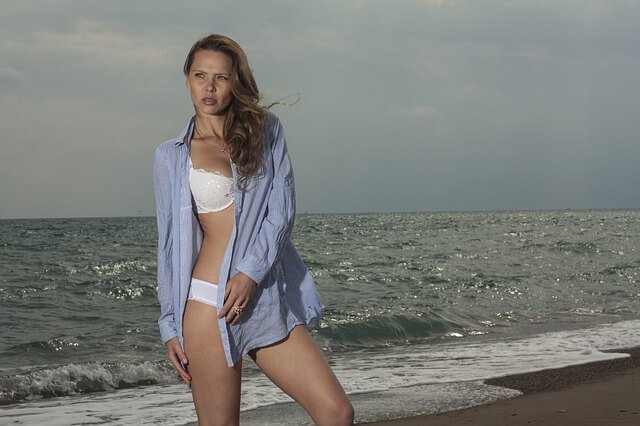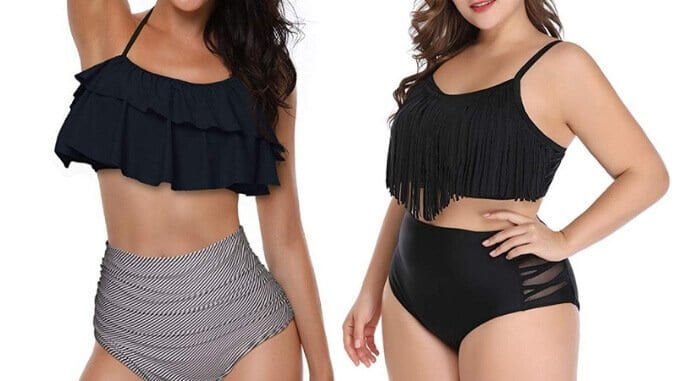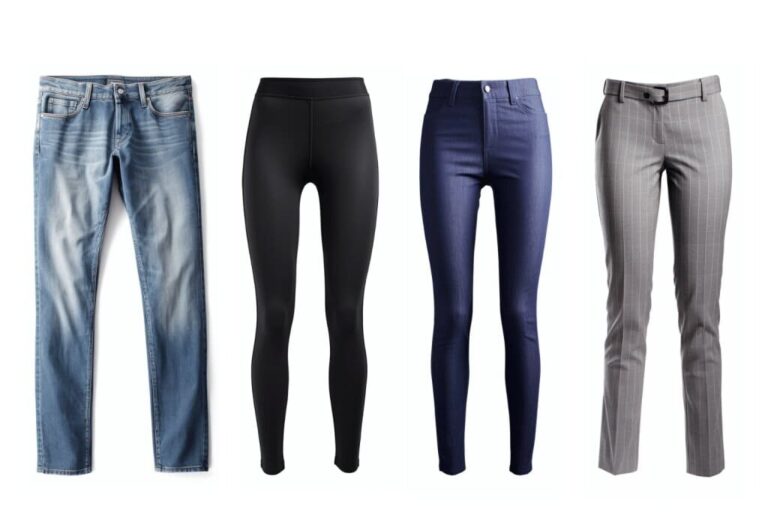If the rule of mainstream fashion was summarized into a sentence, it would be, “Whatever happens, strive for a tall, slim, and curvy figure“. “Short legs? Dress taller!”, “Straight waist? Dress curvier!” And in the case of broad shoulders, “hide them!”
Because of this, internet beauty gurus will have you wear outfits meant to “hide, downplay, camouflage” the broadness of your shoulders. “Wear dark tops and colored bottoms to draw attention away from your shoulders. Wear simple tops and voluminous bottoms to balance your body’s proportion.”
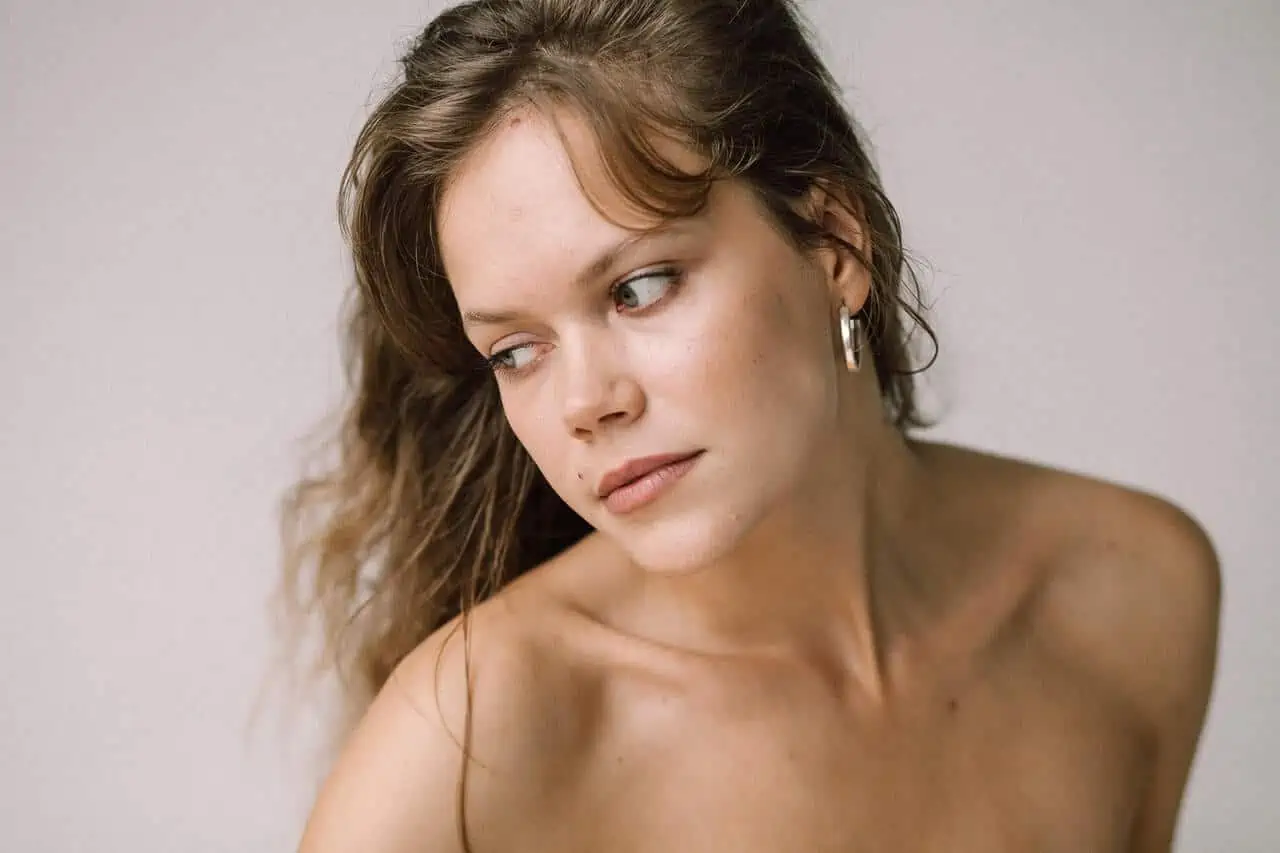
For some reason, broad shoulders on women are seen as bulky, masculine, and unattractive. But are they? Have you ever wondered whether there’s an alternate way of dressing up? One that doesn’t involve hiding some parts of you while actually looking good?
In this article, you’ll learn why the conventional dressing approach is damaging not only to your confidence but also to your overall aesthetics. Here’s why you should not hide your broad shoulders as a woman.
What does “hiding the shoulders” mean?
“Hiding” or “downplaying” is the act of wearing outfits with dull designs and colors to draw the least attention to certain body parts you want “hidden”.
This stems from the belief that some body parts are more desirable (curvy waist, long legs, big butt) than others (broad shoulders, flat chest, short height). These undesirable parts are usually referred to as “problem areas”.
In the case of broad-shouldered women, the deemed problem areas are the broad shoulders and the narrow hips. Therefore, the “goal” is to narrow the broad shoulders and widen the hips to create a balanced, hourglass silhouette.
This translates to having broad-shouldered women wear dull colors for their tops and bright colors with voluminous designs for their bottoms. The desired outcome is that the attention is taken away from the shoulders and directed towards the collarbone and chest area.
A similar “technique” would have you wear necklines that negate the natural shape of your shoulders. If your shoulders are angular, which is usually the case if you have broad shoulders with an inverted triangle body, they’d have you wear rounded necklines to “cancel out” the angularity and “masculine features” of your shoulders.
The problem with this advice is the belief that broad shoulders are unattractive in the first place.
I’m not saying this based on feminist principles; I’m saying this based purely on aesthetics. When you don’t follow the natural width and shape of your bones, there are only two ways your ensemble could end up looking: dull or unflattering.
Take this dress for example.

The model has broad shoulders and yet the shoulder width of the dress doesn’t honor that of the model. It’s way too narrow and this narrowness is highlighted from the contrast formed by the model’s broad shoulders and narrow outfit.
Because of the narrow shoulder width coverage, the neckline also suffers. The neckline opening ends up looking restricted and overly elevated, creating an enclosed feeling which never looks flattering on broad shoulders.
Note that this is not a problem with the sizing. Should she size up, the lower part of the dress would just balloon while the shoulder area would barely widen. This, therefore, is not a flattering dress for the model.
The shoulder area of the dress just doesn’t match that of the model. She would be best served with a more open neckline and a wider shoulder area.
When traditional advice works
The funny thing about conventional advice is that it’s a hit and miss. While half the time it results in an unflattering silhouette, the other half results in a flattering one! So half the time, you’re confused, the other half, you’re clinging to it like it’s gospel.
Take plunging necklines, for example.
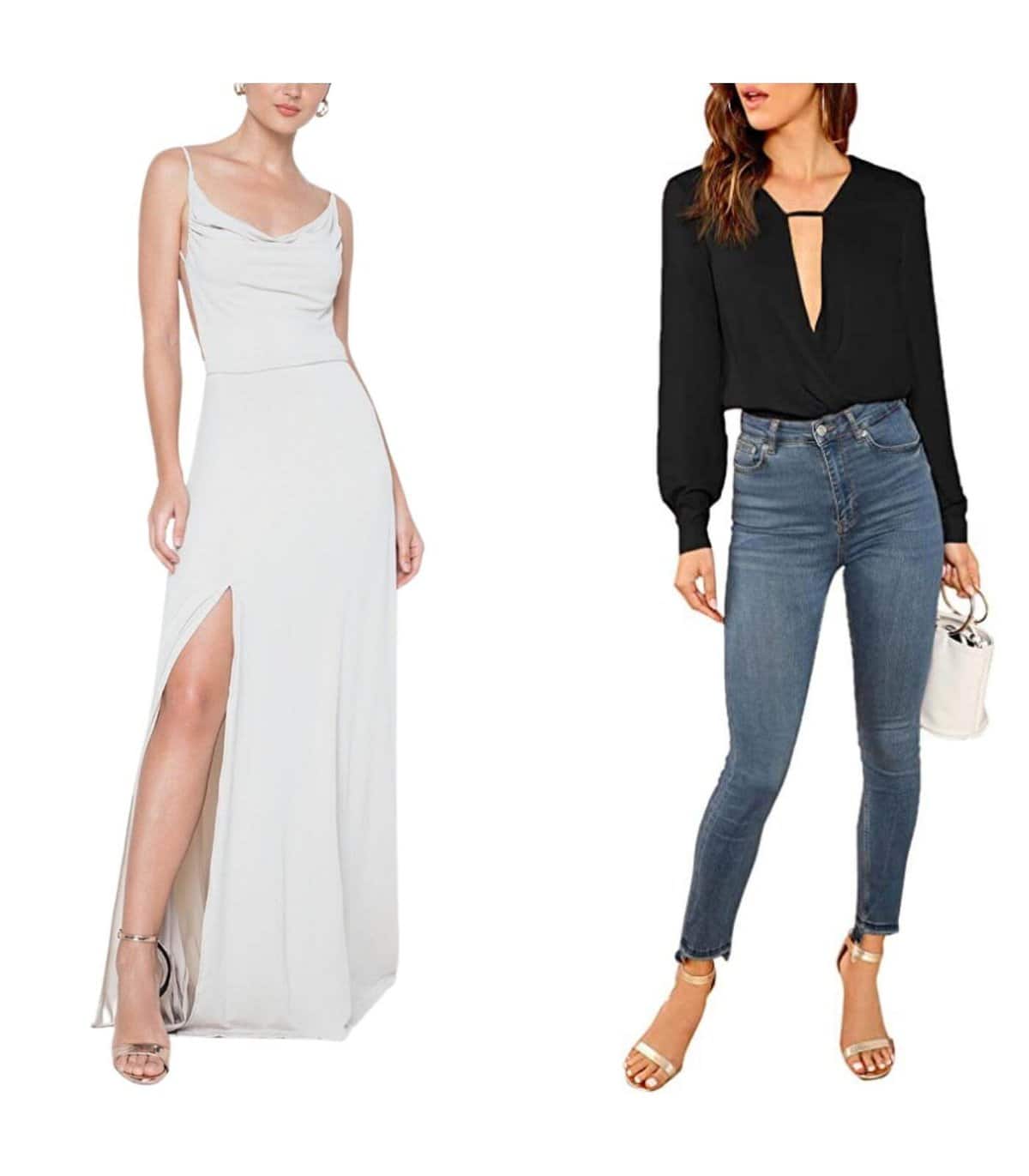
According to the traditional advice, plunging necklines (scoops, V necks, cowl) should be broad-shouldered women’s go-to outfits because they take the attention away from the shoulders and divert it towards the collarbones and chest area.
However, this isn’t exactly what’s happening. The reason why plunging necklines look so great on broad shoulders is NOT that they distract the eyes from the shoulders but that they accommodate the shoulders.
What is shoulder accommodation?
Accommodation can be applied to all body parts. But in this article, we’ll focus on shoulder accommodation.
Shoulder accommodation means wearing pieces that follow the shape and expanse of the wearer’s shoulders. It is the opposite of “hiding/downplaying”. It makes no attempt to “visually reduce” the shoulders but rather showcases them in their full glory.
So, no, plunging necklines do not take away the attention from your shoulders. Instead, they showcase them elegantly by being wide and open enough to accommodate the real shoulder’s width.
They hang and drape from both shoulder blades, creating the impression of a free, flowing river, and by so doing, flatter and compliment the shoulders, instead of “hiding” them.
With vs without shoulder accommodation
Take a look at this comparison between two similar dresses.
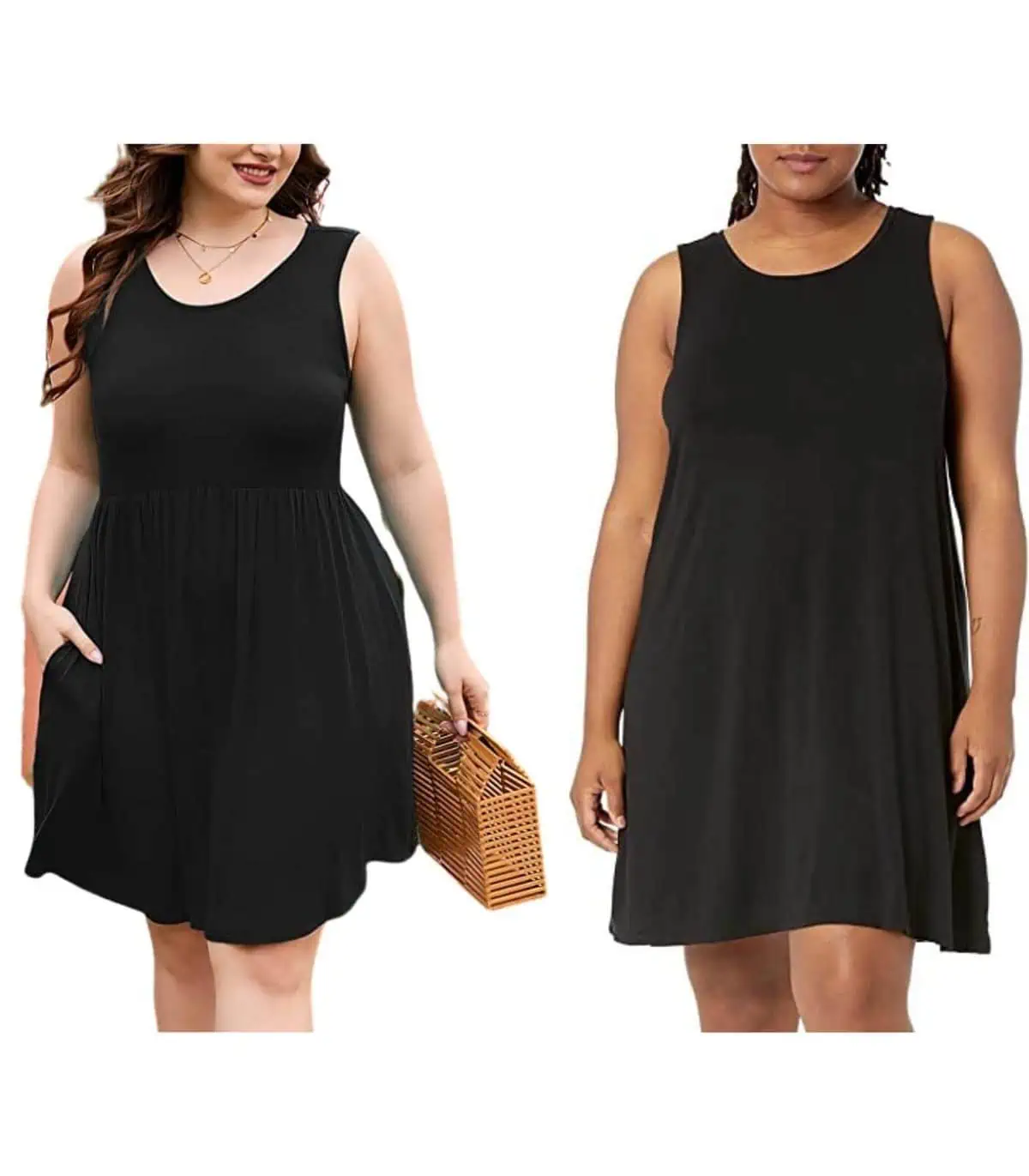
As you can see, both dresses share identical necklines. And yet, if we talk shoulder accommodation, there’s a huge difference here.
The left dress looks more flattering than the right. Why is this?
Simple. The left dress provides sufficient width and coverage to honor the broadness of its wearer’s shoulders. The right dress doesn’t.
Notice both necklines and you’ll see a huge difference. The neckline of the left dress is simply wider, more relaxed, and open.
The right dress, on the other hand, looks forced, restricted, and a bit more elevated than it should. It looks narrower in comparison to its wearer’s shoulders. That’s disharmony and it results in an ill-fitting ensemble.
How to accommodate broad shoulders
To know if an outfit accommodates broad shoulders, ask yourself these questions:
- Does this outfit honor the width of my shoulders?
- Does it unabashedly showcase them?
- Or does it hide and smother them?
Generally, the only sure way to find out is to put it on and see for yourself. But if you’re online shopping, then there are several guidelines to follow to pick the best outfits possible.
Note that these are not foolproof. Factors like fabric fit and stretchability also affect the overall ensemble. But for online shoppers, these reminders should dramatically improve their shopping accuracy.
1. Pick streamlined and open necklines.
“Streamlined“, in this context, means open, relaxed, and free. It offers no resistance to the broadness of your shoulders. Instead, it highlights them. It’s freeing, not confining; open, not close; wide not narrow. Think of water languorously sashaying its way through a calm stream.
Remember these 5 necklines as your safest bets when online shopping:
- V-necks
- scoop
- cowl
- boat
- off shoulder (asymmetrical or otherwise)
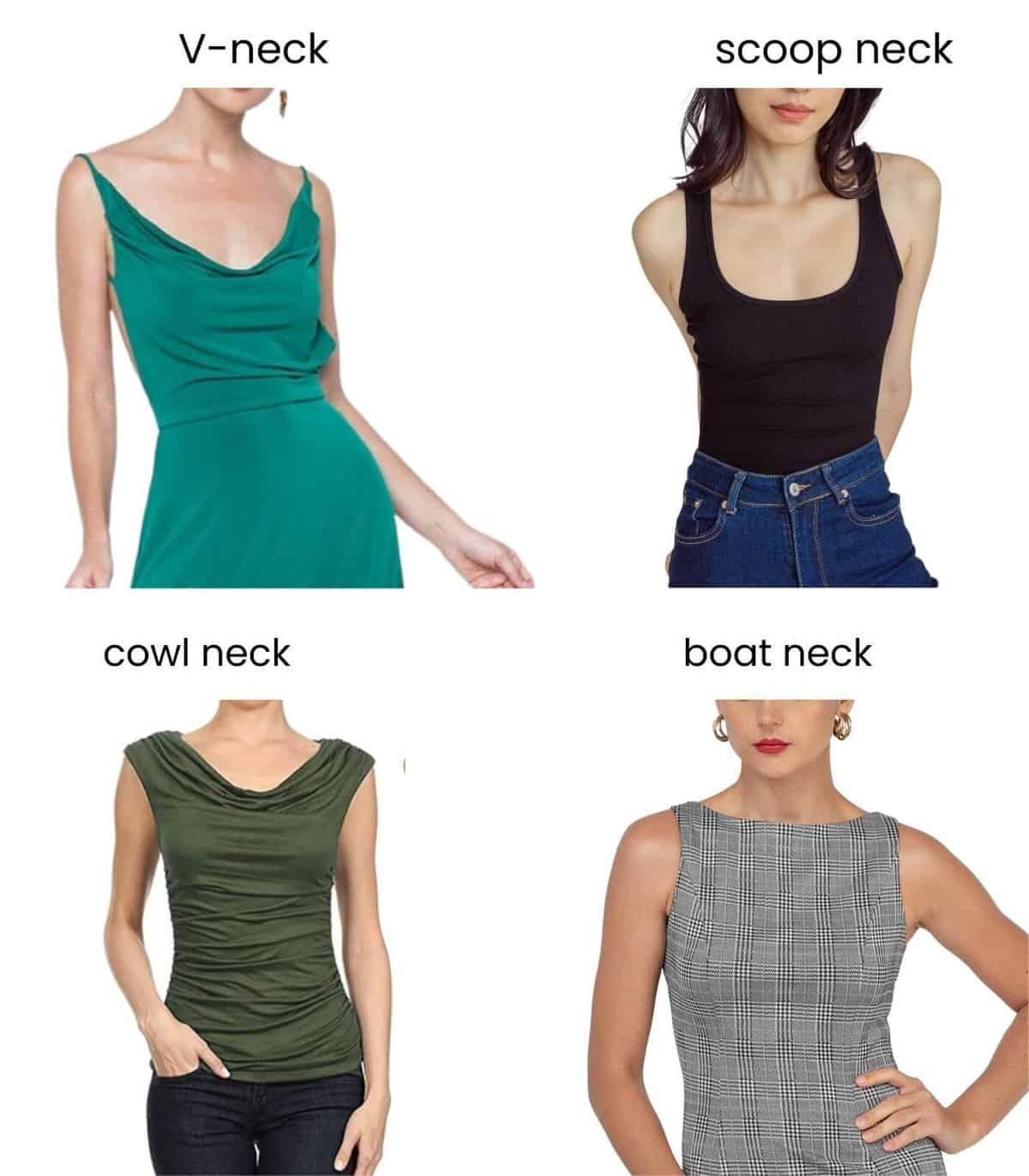
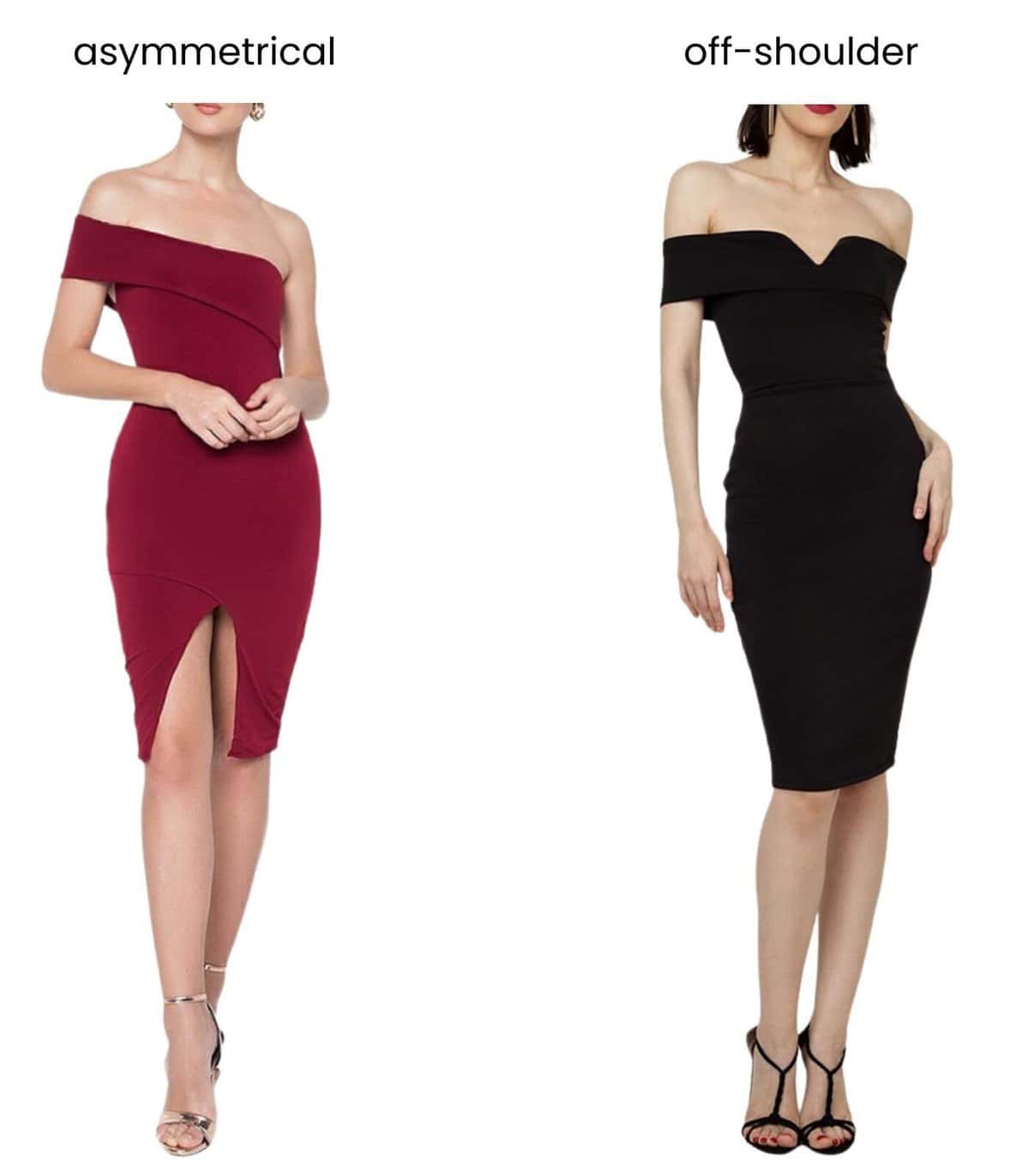
These necklines simply allow your shoulders to unabashedly reveal themselves and show off their majestic expanse. You can never go wrong with these.
Let your shoulders stretch as far and as wide as they desire. Never hinder them and you’ll achieve a silhouette that is flattering, natural, and unrestricted. That’s the perfect way to honor your shoulder width.
2. But any style can look good on you too.
While the five above-mentioned necklines are flattering for broad shoulders, know that you shouldn’t limit your wardrobe to these necklines. In fact, any outfit style can look flattering on broad shoulders as long as its fabric fit and stretchability accommodate the shoulders.
For example, you might think that spaghetti straps are only best for petite women with narrow shoulders. However, it is equally possible for a woman with broad shoulders to pull off an outfit with spaghetti straps as long as it accommodates her shoulders.
The resulting ensemble would just look different on both wearers (narrow and broad shoulders) but both can have an equal chance of looking flattering in their own ways.
Below is a comparison between Marilyn Monroe (with a balanced shoulder-to-hip ratio) and Jennifer Lawrence (with broad shoulders) wearing spaghetti strapped dresses. Both could evidently pull off the same look in their own ways.


In short, do not lock yourself in a box! Do not heavily depend on an outfit’s style or neckline to determine if it flatters you. The only way to find out is to try it on.
Sure, the 5 necklines may provide you with a shortcut in situations where you need to filter your choices. But never should you consider them as an absolute rule because they simply aren’t.
Any style and neckline can look great on broad shoulders as long as the shoulders are accommodated.
If you need more examples on shoulder accommodation, head over to this article: A No-BS Guide on Dressing Broad Shoulders.
In my future articles, I’ll also show you sample photos of shoulder accommodation, when it’s being violated, and how to pick outfits that allow it.
Unfortunately, it takes a lot of practice. It’s not something that you would immediately master on day one. So be patient, take one step at a time, while unlearning the notion that the only way to look great is to mimic an hourglass figure.
Broad shoulders should never be seen as “problem areas” because they’re simply not.
Society might dictate what’s in and out but aesthetics is a completely different story. If it deems something as beautiful, then it’s simply beautiful no matter its shape, size, and color.
To it, there is no such thing as “problem area”. Just bad styling.
